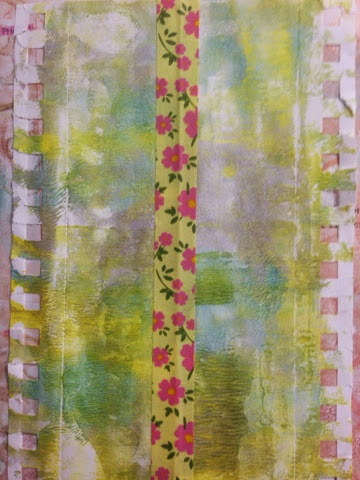Using a photo which holds a significant memory is a helpful tool in so-called art therapy and one's journey through grief. In the example here, the mother of a teen who was killed last year works with a photo she took while she was taking her son on a ski trip. She had asked her son to roll down car window and lean way back so she could take a picture of the scene they were driving past making the slow climb up the steep mountain road. As a symbol, the artwork doesn't need to exactly duplicate the actual scene; rather the shapes of the symbols point to something bigger than "just" the trees. In this example, the trees symbolize the special times that she has had with her son at their mountain retreat. The mother used black paint for the first imprint (below); washed the gel plate and used purple (on of her son's favorite colors) for the second round (left).
Place the photo in an acetate sleeve and tape to work table. Position gel plate. Mix retarder into your acrylic paint to slow down the drying process and then quickly paint your image using a generous application of paint.
Press a sheet of watercolor paper and pull the print. The "trees" image shown below was printed onto a page previously prepared with a gel imprint with silver acrylic and a stamped image to suggest the texture of snow. You could pull a second "ghost" print; spritz the plate with water and them pull a third and possibly fourth print. Adhere the mono prints into an altered book art journal as backgrounds for future reflection.
















































